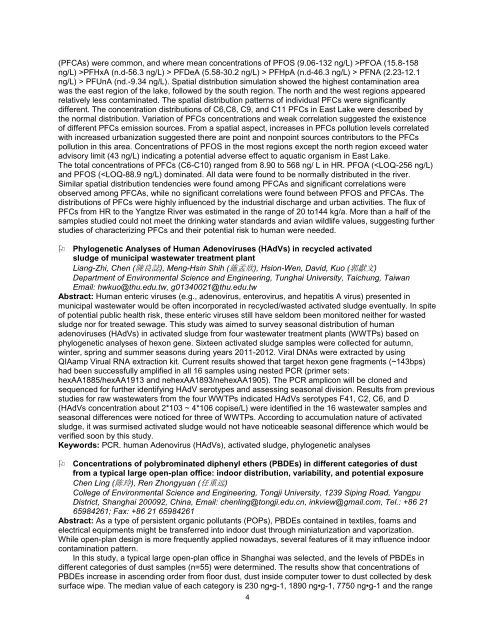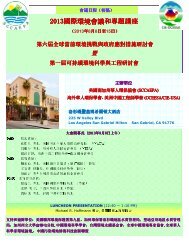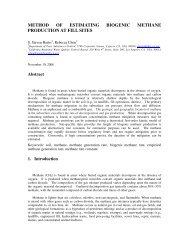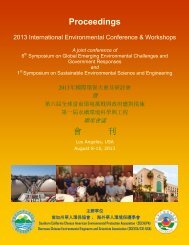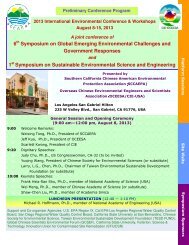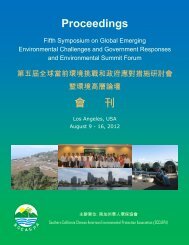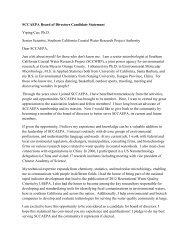Proceedings æ å - SCCAEPA SPONSORS
Proceedings æ å - SCCAEPA SPONSORS
Proceedings æ å - SCCAEPA SPONSORS
Create successful ePaper yourself
Turn your PDF publications into a flip-book with our unique Google optimized e-Paper software.
(PFCAs) were common, and where mean concentrations of PFOS (9.06-132 ng/L) >PFOA (15.8-158<br />
ng/L) >PFHxA (n.d-56.3 ng/L) > PFDeA (5.58-30.2 ng/L) > PFHpA (n.d-46.3 ng/L) > PFNA (2.23-12.1<br />
ng/L) > PFUnA (nd.-9.34 ng/L). Spatial distribution simulation showed the highest contamination area<br />
was the east region of the lake, followed by the south region. The north and the west regions appeared<br />
relatively less contaminated. The spatial distribution patterns of individual PFCs were significantly<br />
different. The concentration distributions of C6,C8, C9, and C11 PFCs in East Lake were described by<br />
the normal distribution. Variation of PFCs concentrations and weak correlation suggested the existence<br />
of different PFCs emission sources. From a spatial aspect, increases in PFCs pollution levels correlated<br />
with increased urbanization suggested there are point and nonpoint sources contributors to the PFCs<br />
pollution in this area. Concentrations of PFOS in the most regions except the north region exceed water<br />
advisory limit (43 ng/L) indicating a potential adverse effect to aquatic organism in East Lake.<br />
The total concentrations of PFCs (C6-C10) ranged from 8.90 to 568 ng/ L in HR. PFOA (


